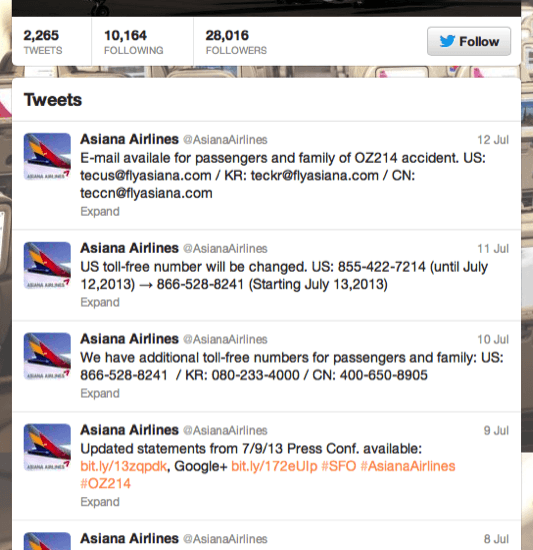Part 4: Public Inquiry and Information Centers


When a crisis occurs that will affect a large number of people, you should activate your call center within hours of the incident.
This is part 4 of a 12-part series describing the consequences of a typical large-scale loss of life incident. Following the framework of the 12 Principles of Crisis Management, I describe these consequences and offer best practice solutions for each consequence.
Consequence 4
There are thousands of phone calls from concerned family members, media and others seeking information about their loved ones and the situation. People call you because you were the last point of contact with the loved one. The callers are often distressed, in shock and desperate for information about their loved one. They need to provide information, to know that someone is aware that their loved is involved and that the information has been received and not lost. They need to know that your organization will call them or speak with them as soon as there is information.
Solution
This is a job for your call center. Like many other crisis management functions, success in a call center begins before the crisis occurs. When a crisis occurs that will affect a large number of people you should within hours activate your call center. This means widely distributing a pre-written press release to all media outlets and social media sites. This press release should include the toll and toll free phone numbers for people to call, it should remind people that the purpose of the call center is to collect information from survivors and those people directly affected. Phone numbers should be available for each country that is involved – the location of the incident and the countries who have citizens that may be involved. Further, they should not be numbers you regularly use.
Your call center should focus on five tasks. The first is taking inbound calls. Inbound calls come from survivors, family members / friends, media and general public. The answering operator should be trained to quickly screen calls, so that the call center deals only with the survivors and family members and friends. Media should be referred to a media call center. General public should be referred to regular information numbers.
It is very important that operators have a prepared script so that the same information is collected from all callers and that all callers are providing the same information. Scripts should be easily modified to address different types of events. Operators should also have the ability to include real-time translators and mental health specialists, if needed.
The second task is making notification calls. Notification calls are made to the families / friends who have loved ones directly involved in the incident. This notification may come because you have a manifest, guest list, building access list or other source. Operators making notification calls should have additional training compared to operators who take inbound calls.
The third task is to begin the data management process. As operators take inbound calls and others make notification calls, they should be entering information and notes directly into a web-based computer data management system. The data management team then starts to build a profile for each of the directly affected people. Several callers might provide information about the same person, but use nicknames or not have the complete name a person used on a manifest. The data management team has all the information in the web-based system and can begin to associate each piece of information with the appropriate profile.
Part of data management is also coordination when the event involves survivors. The data management team can contact shelters and hospitals, alerting them to the fact that families are providing information to a centralized call center and can provide a link between locations, or provide contact information to the families of survivors, if known. In essence, the call center become the single point of contact for all people to call. Otherwise, families will call every hospital or shelter in an area around an incident, causing those telecommunications and web systems to fail.

Following the crash of Asiana flight OZ214, many different contact numbers and emails appeared on various Asiana sites.
The fourth task is to make travel arrangements for the family and friends, if a family assistance center is going to be established. The call center operators may also make arrangement for survivors to travel back home.
The fifth and final task that a call center performs is providing mass updates to families / friends after they have left the family assistance center.
A lot of companies try to use untrained operators without scripts or sufficient lines to handle the surge of calls. Worse cases use untrained staff with a few phones and call that a “crisis call center.” Those don’t work. Effective call centers require technology, sufficient numbers of operators, and most importantly, operators trained in both the hard skills of using the script and soft skills of working with people in crisis. The call center is often a family or friend’s first contact with a company following a major incident. It sets the tone for the response.
Examples
Call Centers are not just a private company function. Following the 2004 Boxing Day Tsunami, call centers in the United Kingdom and Sweden were both overwhelmed and many people simply gave up trying to reach them. Imagine the fear and frustration families had not knowing how to reach anyone.
In another example, the U.S. Department of Transportation issued its first fine ever to Asiana Airlines for its response to the crash of their flight OZ 214. The fine was partially for not complying with a U.S. law mandating that airlines have a call center for families after an aviation accident. In part, the U.S. DOT said:
“For approximately one day following the crash, Asiana failed to widely publicize any telephone number for family members of those onboard, and the only number generally available to the public that family members could call was Asiana’s toll-free reservations line. Locating this phone number on Asiana’s website required significant effort. The reservations line did not include a separate menu option for calls related to the crash and callers were required to navigate through cumbersome automated menus before being connected to an Asiana employee.”

Comments
Trackbacks & Pingbacks
[…] flow is also very important. The entry point for most events is the call center. The information first gathered by the call center operators is what first populates the database. […]